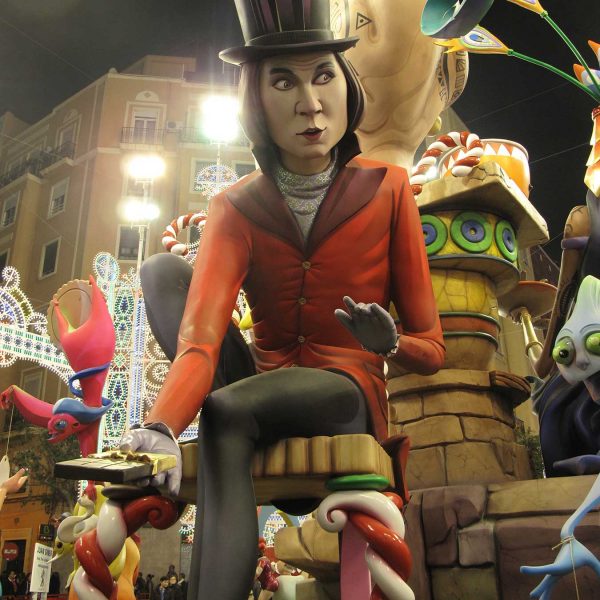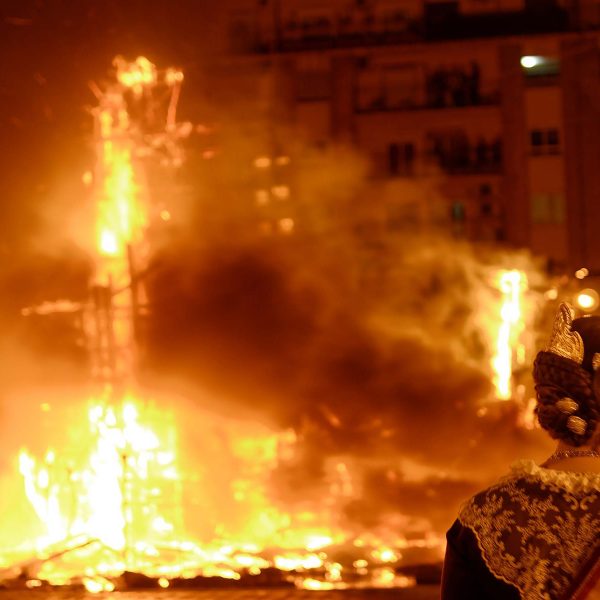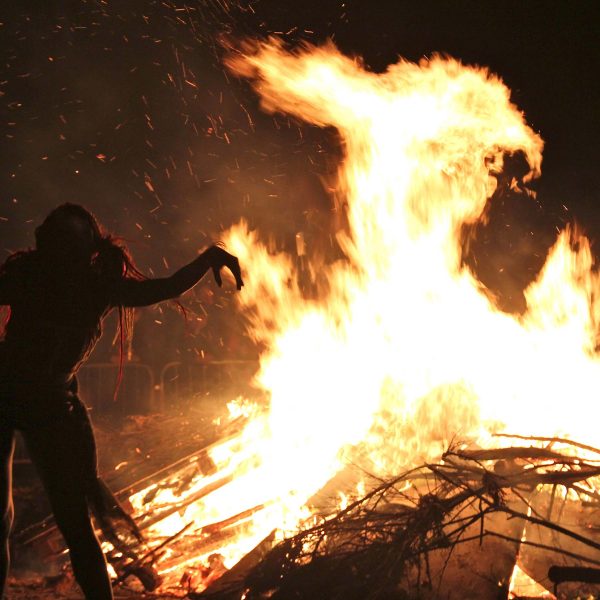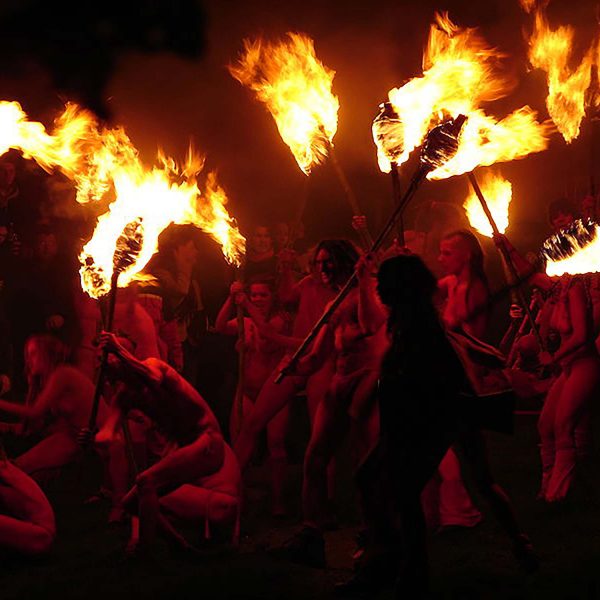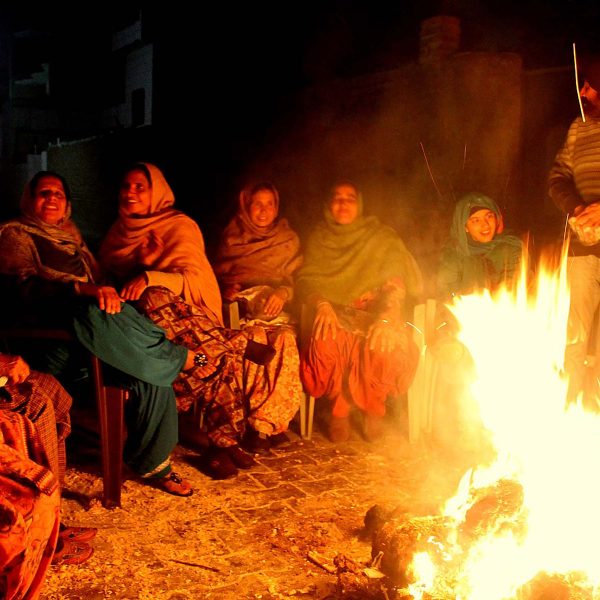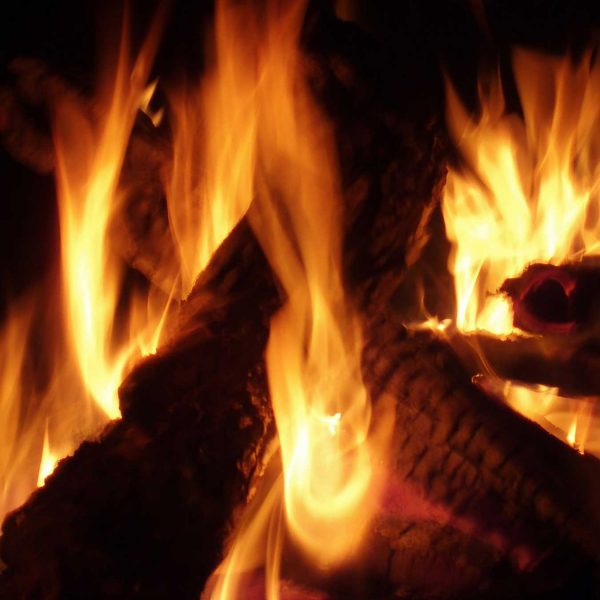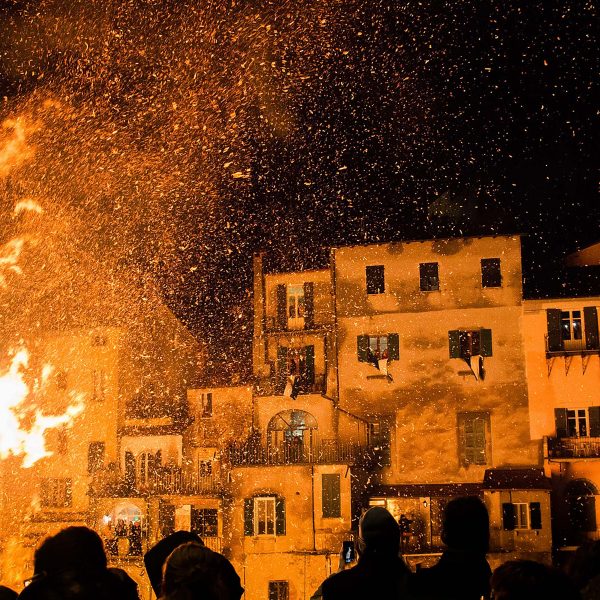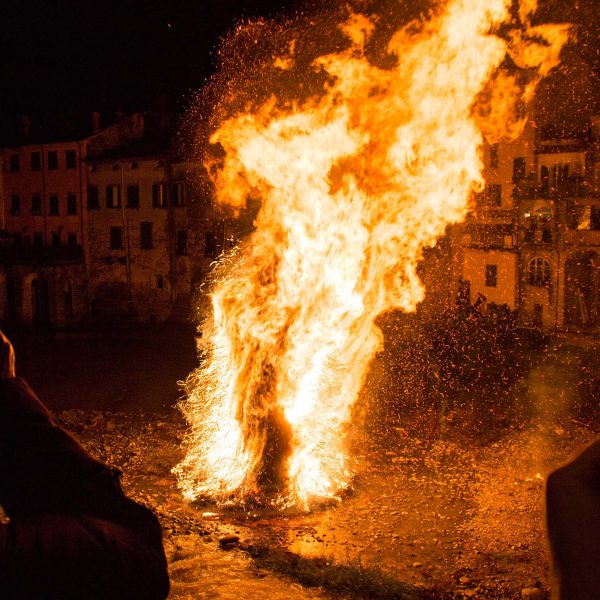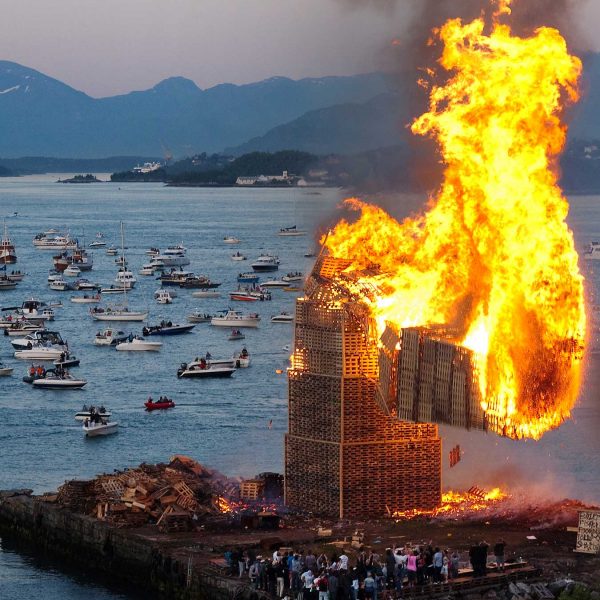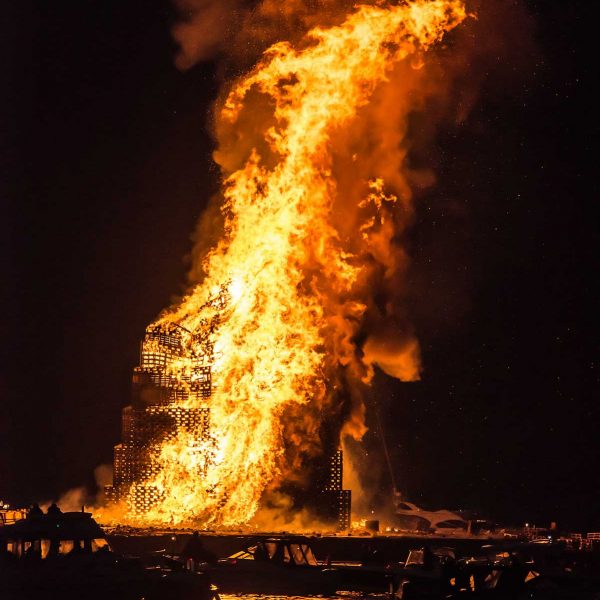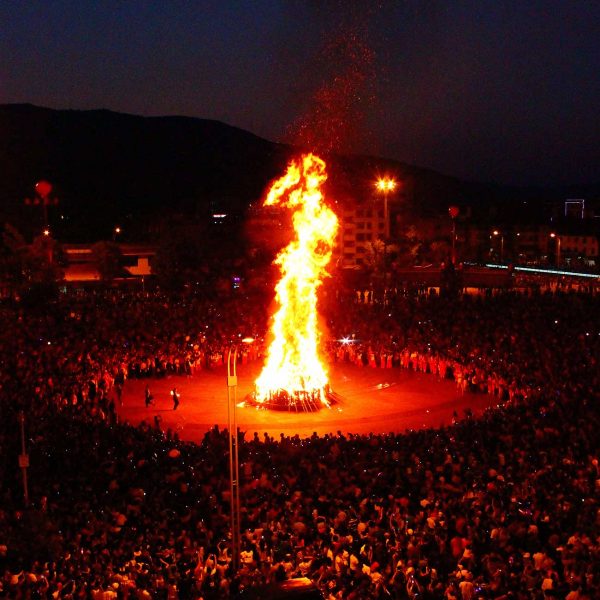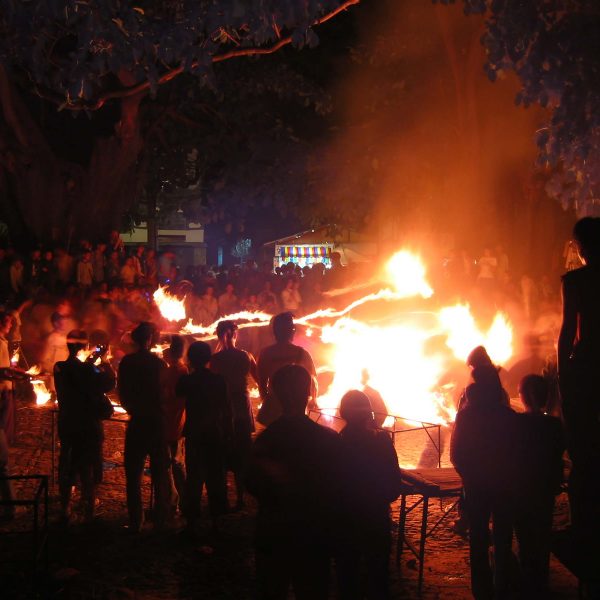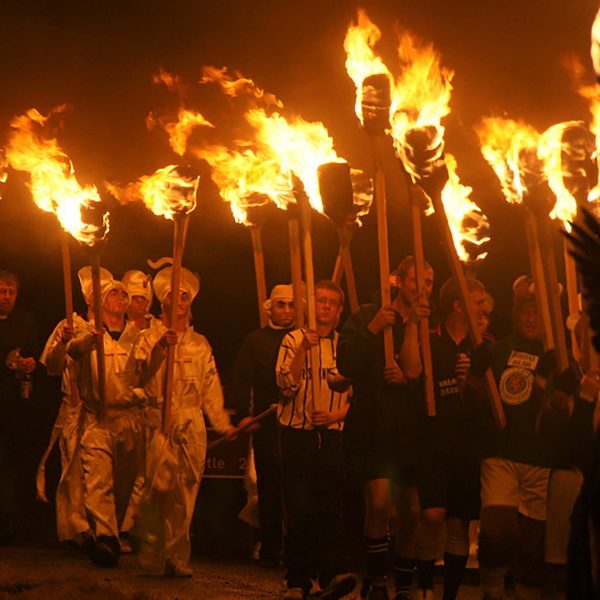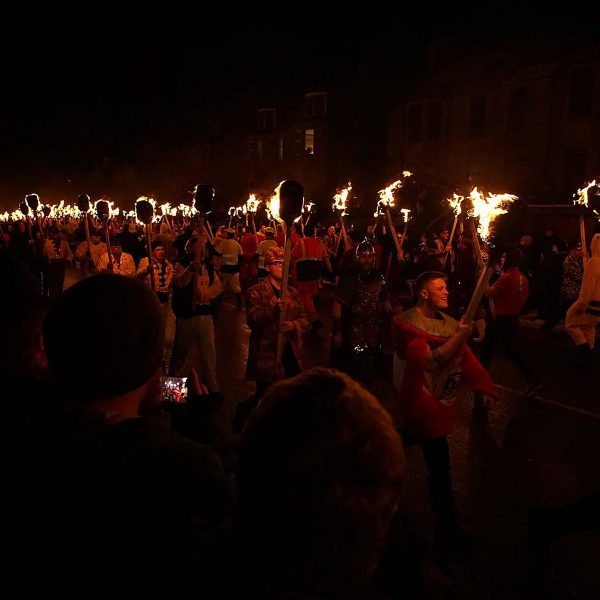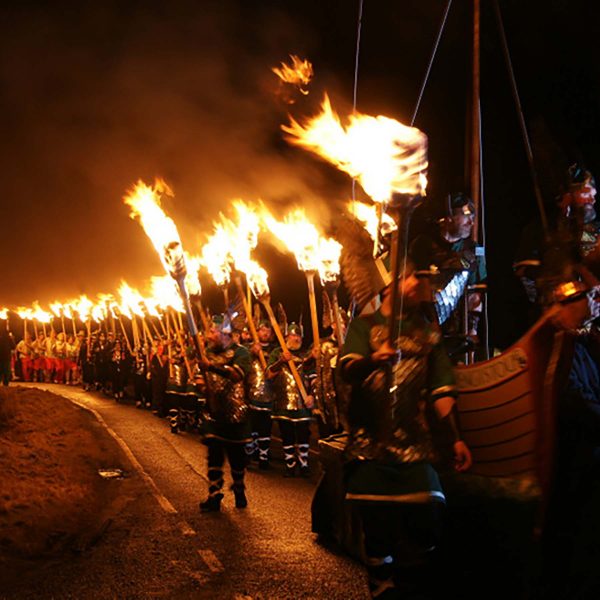Fire can be found in a multitude of festivals around the world. Torches, bonfires, and balls of fire are just some of the manifestations.
A great diversity of cultures around the world have used and continue to use fire in the form of pyres and bonfires. The Bantu in Africa gathered around them to ask for rain; many cultures in Europe light them to mark the change in the seasons; and they are also lit in homage to local deities in Asia. Other bonfires reflect socio-political conflicts, either as humorous criticism, like the Fallas in Valencia, or in open political conflict, as in Northern Ireland.
Here you can see how some of these festivals resemble the ones in the Pyrenees.
Fire festivals 2017. Photography: Tomas Anunziata. Licence: Pexels
Fallas de Valencia
Fallas. Several towns in Valencia. March 19
The Valencia fallas are on the UNESCO Representative List of the Intangible Heritage of Humanity.
Every year in March, Valencia celebrates the fallas, a festival that combines tradition, satire, and art. A number of events over 19 days lead up to one the most famous fire festivals in the world.
Local inhabitants create huge figures known as ninots (dolls), which are displayed in town or village squares. On the night of March 19, they are reduced to ashes in a spectacle that is an art in itself. At 10 pm the children’s ninots are set on fire, followed by the large ones at midnight. The falla awarded first prize is burned at 12:30 am at night and the festivities conclude with the burning of the falla in front of the City Hall at 1:00 am.
Plus d’informations : www.fallas.com
Beltane Fire Festival
Beltane fire festivals (Edinburgh, Scotland). 31 April.
The Beltane festival marks the beginning of summer, the arrival of warmer weather, and the bringing in of harvests. This Gaelic festival has a long historical tradition, and, although it almost died out in the 19th century, it has now been revived, especially in Edinburgh, in the heart of the city. One of the most important parts of this celebration is the lighting of bonfires. The festival represents the growing power of the sun and reaches its culmination on Midsummer night. The current festival has been reinvented with processions, reenactments of the death and rebirth of the “Green Man,” and the lighting of the bonfire.
More information : www.beltane.org
Lohri, Índia
Lohri festival (India). 13th January
This festival is celebrated in the Indian state of Punjab, mainly by Sikhs and Hindus. The tradition symbolizes the end of the winter solstice and the arrival of longer days. In this ancient festival, there is singing and dancing, and food is thrown onto a bonfire to symbolize the end of the old year and the start of a new one. As part of the celebrations, children go from door to door to collect food to be thrown onto the fire of given to guests. Women gather in a circle around the bonfire and perform the Gidda dance. There are songs to thank the Sun God for his warmth and benevolence, and others that refer to the legend of the hero Dulla Bhatti, who saved numerous girls from slavery during the reign of the Mughal emperor Akbar.
More information : www.lohrifestival.org
Balls of fire
Balls of fire (Nepaja, El Salvador. August 31)
Balls of fire are at the center of festivities in Nepaja. The celebration can be interpreted in two ways. Some claim that the balls of fire represent the balls thrown by the devil against the patron saint Saint Geronimo, and others argue the balls recall the eruption of the San Salvador volcano in 1917. In this festival, in which two bands of young people throw fireballs at each other, participants wear wet clothes and canvas gloves to avoid burns. The balls thrown are made of cotton, tied with wire, and soaked in petrol. All the participants also paint their faces, while visitors enjoy the food prepared for the occasion.
Balls of fire festival, Nepaja, 2012. Photographer: Elmer Guevara. Este archivo se encuentra bajo la licencia Creative Commons Genérica de Atribución/Compartir-Igual 3.0.
Disfida dei Falò
Disfidia dei Falò Pontremoli (Toscana, Italia). January 17 and 31
In Tuscany there are numerous fire festivals held in winter, the supposed aim being to call upon the god of the Sun to appear. In Pontremoli, the bonfires have become a symbol of the rivalry between two villages or districts of the same town. The parishes of San Nicola and San Geminiano compete to build the biggest and best bonfire. Every year, on January 17, thousands of people flock to the Pontremoli riverbed for the bonfire of San Nicolò, which is followed on January 31 with that of San Gimignano
Burning of the devil
Burning of the devil (Guatemala). December 7
This festival is held in order to frighten away evil spirits from people’s homes and to cleanse them of evil. It is celebrated throughout Guatemala, but the biggest festivals are held in Guatemala City.
The tradition consists of cleaning the house from top to bottom and throwing out items that are no longer needed. All kinds of objects are burned, including newspapers, wood, and plastics.
Burning of the devil in the La Concepción district of Guatemala city, 2015. Photographer: CONRED Guatemala. Attribution-NonCommercial-NoDerivs 2.0 Generic (CC BY-NC-ND 2.0)
Ålesund St John’s Eve bonfire
Saint John’s Eve bonfire (Norway). June 23
This bonfire, which exudes all the magic of ancient pagan festivals, celebrates the arrival of the summer solstice. A huge bonfire, which can reach up to 40 meters, is made out of wooden pallets that are stacked by hand. The Ålesund celebration is a celebration of nature, life, and fertility.
Yi Fire Festival
Yi fire festival (China). End of August
This festival is celebrated on the 24th or 25th day of the sixth lunar month, which is usually at the end of August. Legend has it that the original festival commemorates the great fighter Atilaba, who drove out a plague of locusts using torches made of pine. On the last day of the festival, everyone holds a torch and gathers around the altar to pray for happiness and a good harvest. To symbolize the unity of the Yi people, all the torches are then thrown onto a bonfire.
Up Helly-Aa, Shetland
Up Helly-Aa, Shetland Islands (Scotland)
This is a festival that is celebrated in many places in the Shetland Islands. In the best-known festival, a procession of up to a thousand guizers march in bands at the end of the season of Yule. When they reach the shore, they throw their burning torches onto a replica of a Viking longship, which is then ceremoniously pushed out to sea. Once the ship has burnt out, the guizers continue the party with music and dancing on what is known as a “Hop” night.
More information : www.uphellyaa.org
 Occitan
Occitan



